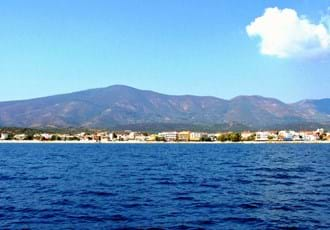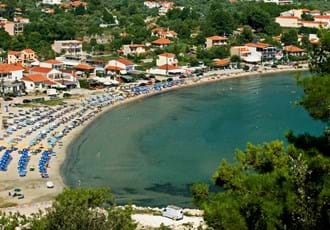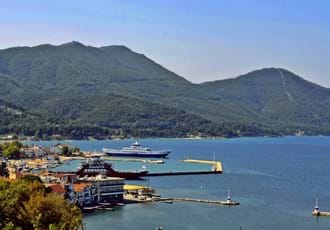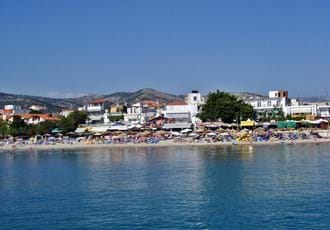A gleaming emerald in a block of brilliant white marble. That’s the hypnotic beauty of remarkable Thassos. Pine forests and olive groves paint the island a lush green as they flow down hillsides to the beaches.
Towering behind the trees are rugged mountains where marble and gold were mined long ago. Jewellery in the island’s fantastic archaeological museum was made of Thassos gold thousands of years ago. And there’s still gold to be found!
Amazing Golden Beach is more than a mile of beautiful sand with sunbeds, sunshades, cafes and a menu of water sports. It’s one of several lovely Thassos beaches that have won Europe’s Blue Flag award for cleanliness and great facilities.
But if you want to get away from the busier, organised beaches there are many secluded spots hiding away on this circular island in the north-east corner of the clear blue Aegean Sea.
Thassos Town, the capital, was once a city made of the island’s famous white marble. Ancient ruins are everywhere, mixed in with shops and restaurants, a long waterfront, interesting harbour and a good beach. High above the town is an amphitheatre and, above that, the remains of an even older acropolis.
Set off in either direction from Thassos Town and you bump into lovely resorts, villages and beaches. Look out for the sandy beaches of pretty Alyki. Find the natural pool of Giola, a large basin carved out of rock by the sea and full of inviting emerald water.
See the working waterwheel at the olive press in Panagia. Go to Archangel Michael Monastery on the site of a church built by a hermit. Some visit because it has a relic said to be from the nail that fixed Christ’s right hand to the cross.
Explore Theologos, the old capital when the Ottoman Turks ruled. It’s one of several mountainside villages. Some have gurgling streams and fountains and remote Kastro is an almost-deserted fortified village built on a rocky hilltop to keep pirates at bay. Stunning views.
Yes, there are lots of gems to be found on this emerald isle.

























